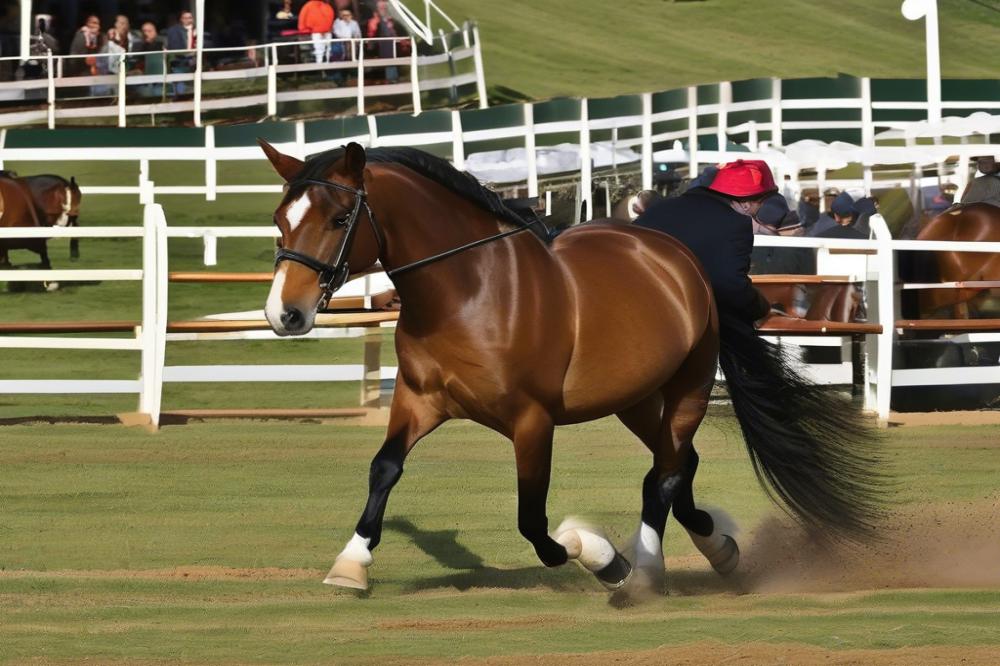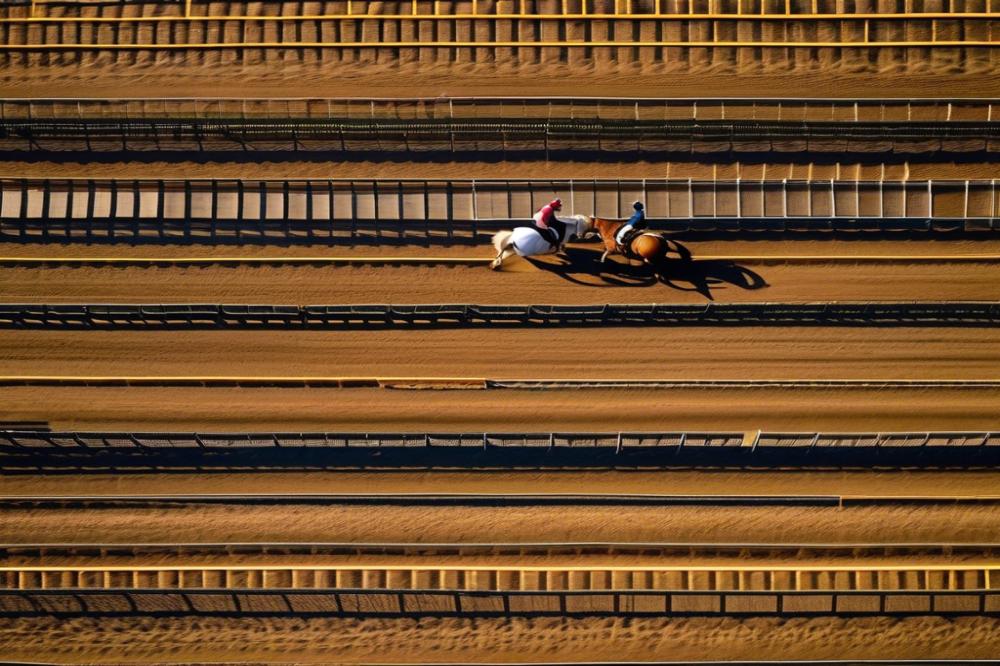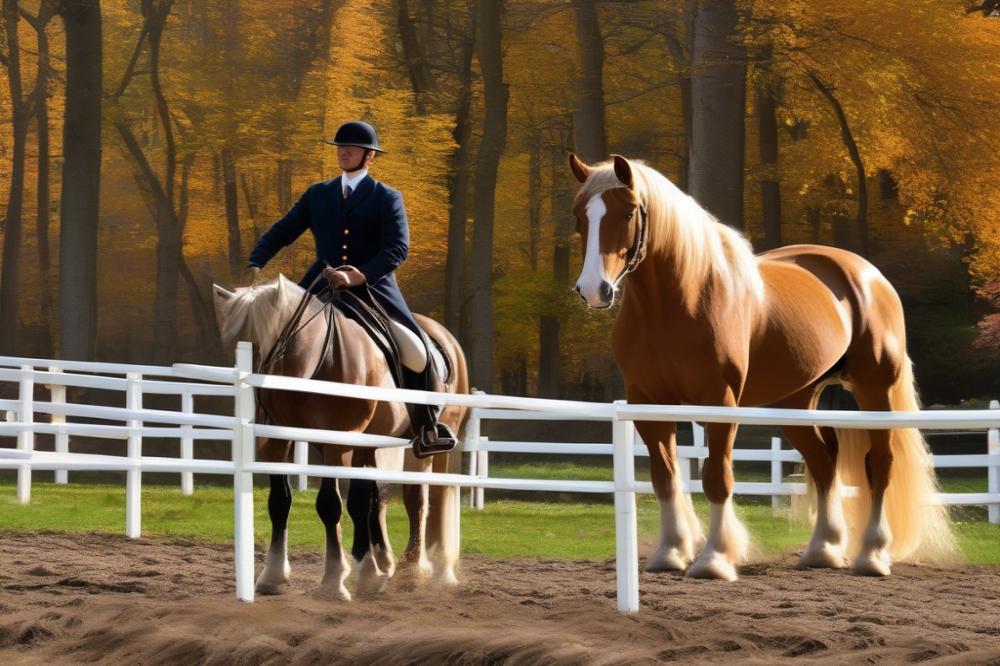How to Maintain Rhythm While Riding a Belgian Draft Horse
Rhythm is fundamental in horse riding. It plays a crucial role in creating harmony between rider and horse. When a rider maintains a steady rhythm, both horse and rider can achieve better performance. This connection transforms riding from a mere task into a fluid dance. Without rhythm, communication can falter, leading to misunderstandings. Riders should strive to cultivate this essential element.
Belgian Draft Horses are renowned for their strength and gentle demeanor. Their impressive stature and calm nature make them popular choices for various equestrian activities. These horses possess unique characteristics, such as a powerful build and an easy-going attitude. Such traits can make them excellent companions for novice and experienced riders alike. Understanding these qualities is vital for effective training.
The relationship between rhythm and training is undeniable. Consistency in riding rhythm helps establish trust. It fosters a bond that can significantly enhance the riding experience. Maintaining ideal rhythm also encourages the horse to respond better to cues. This alignment leads to improved performance over time. Riders can develop muscle memory, making their commands clearer. A cohesive approach can turn challenges into achievements.
Understanding the Belgian Draft Horse

Many people admire the Belgian Draft Horse for its impressive size and strength. This breed typically has a stocky build, broad shoulders, and strong legs. Its neck is muscular, supporting a large head. Those physical attributes contribute to its unique gait. Unlike lighter breeds, this horse moves with a deliberate, powerful stride. Riders may notice that each step carries a significant amount of weight. Balancing on such a strong animal requires an understanding of its movement.
When comparing movement styles, Belgian horses differ noticeably from lighter breeds. Other types might exhibit quick and nimble motions. In contrast, the Belgian’s walking and trotting are steadier and more pronounced. Their expansive strides often demand a rider’s attention. A horse that moves with such force can easily unbalance someone who is not prepared. Recognizing these differences is vital for maintaining rhythm while riding.
Another key aspect involves understanding the horse’s behavior and temperament. This breed is often known for being gentle and calm. However, the sheer size can be intimidating. Familiarity with body language helps riders respond appropriately. Knowing when a horse is relaxed or anxious can prevent miscommunication. A rider’s confidence is essential in creating a comfortable environment. Taking the time to bond with this breed improves the overall experience.
Key Principles of Maintaining Rhythm

Rhythm in riding refers to the steady, repeating flow of movement between horse and rider. It creates a harmonious connection that feels natural. Achieving this rhythm is essential for effective riding, especially when guiding a strong animal like a Belgian Draft Horse.
Balance and stability play significant roles in maintaining this vital rhythm. When a rider’s body is aligned properly, it allows for smoother communication with the horse. Shifting your weight slightly may disrupt the horse, causing an uneven pace. Therefore, keeping balance helps to reinforce a consistent experience for both parties.
Consistent pace and cadence are equally important. A change in speed may confuse the horse. Riders should aim to maintain a steady tempo, allowing the horse to anticipate the next move. This predictability builds trust and encourages the horse to maintain its rhythm in return. By focusing on these principles, riders can enhance their riding experience.
riding techniques for Rhythm Maintenance

Posture plays a crucial role when riding. Sitting up straight not only looks good but also helps with balance and control. Shoulders should be back, and weight must be distributed evenly across the seat. Stability is essential, especially when guiding a large horse.
Leg aids can influence the rhythm of movement. Squeezing softly with the legs can encourage the horse to move forward. Conversely, relaxing the legs indicates a desire for a slower pace. Coordination between legs and seat aids creates harmony, which is vital for maintaining rhythm.
Movements should be fluid. Tension often disrupts the natural flow of riding. Take deep breaths to promote relaxation. Each transition, whether upward or downward, requires a gentle nudge rather than a harsh signal. Riders may find that softening their grip and relaxing their body leads to smoother transitions.
Understanding the horse’s rhythm helps as well. Observing the way the Belgian moves can guide the rider in adjusting their techniques. Anticipating changes in pace allows the rider to respond effectively. A responsive approach facilitates a stronger connection between horse and rider, promoting better rhythm.
Exercises to Improve Rhythm
Groundwork Exercises for Better Connection
Establishing a solid foundation begins on the ground. Groundwork exercises can help you connect with your horse on a deeper level. Practices like lunging or in-hand work encourage communication. Work on desensitizing your horse, using different tools like a whip or a flag. This builds trust and confidence. Continuously reward your horse for calmness. Engage in simple exercises like backing up or sidepassing. These movements enhance responsiveness. A well-connected horse is more likely to maintain rhythm under saddle.
Riding Exercises to Enhance Stability and Balance
Once you’re mounted, focus on your own balance. Sit deeply in the saddle, allowing your hips to move with the horse’s rhythm. Transitions are key. Practice moving between walk, trot, and canter. Each transition should be smooth and controlled. Consider using circles to improve balance. Riding in a circle helps the horse engage different muscles. Incorporate pole work to enhance coordination. This activity encourages horses to be mindful of their feet. With time, these exercises promote stability, making it easier to maintain a rhythmic pace.
Dressage Movements That Promote Rhythmic Flow
Dressage is more than an art form; it enhances rhythm as well. Simple movements like leg yields promote fluidity. The horse learns to respond to your leg aids while maintaining a steady tempo. Incorporate shoulder-in and haunches-in for variety. These movements shift the horse’s weight, improving balance. They also help in developing a soft, rhythmic stride. Remember the importance of consistency in your hands and legs. A steady hand will help maintain tempo. Engaging the horse’s hindquarters is essential to preserving rhythm throughout the session.
Horse Care and Its Impact on Rhythm
Proper conditioning and fitness are essential for any riding experience. Well-conditioned horses exhibit strength and endurance. This directly affects how smoothly they move under saddle. Riders can achieve a better rhythm when their horses are ready for the demands of work. Regular exercise routines should match the horse’s abilities. Overworking can lead to fatigue, disrupting that all-important flow.
The role of grooming and health cannot be overlooked. A clean horse not only looks good but feels better too. Regular grooming leads to improved circulation, which promotes relaxation. When a horse is comfortable in its tack, the ride becomes more enjoyable. Watch for signs of discomfort. Soreness or ill-fitting gear can cause resistance and disrupt rhythm.
Nutrition plays a critical role in performance. A balanced diet fuels a horse’s energy levels. Focus on high-quality feed that meets their specific needs. Different horses may require different dietary considerations. Always consider their workload and adjust feed accordingly. Hydration should never be underestimated. Access to fresh water is vital, especially during active workouts.
Taking care of a horse is a multi-faceted process. Each aspect—conditioning, grooming, and nutrition—contributes to an enjoyable ride. As you ride, pay attention to your horse’s responses. A happy horse will help maintain a steady rhythm. A rider’s ability to connect with their mount enhances the experience. Keeping your horse healthy ensures you’re both in sync.
Final Thoughts on Rhythm and Riding
Maintaining a steady rhythm while riding is crucial for both the horse and the rider. It helps create a comfortable experience. Remember the importance of balance, relaxation, and timing as you work with your mount. These elements are foundational to a smooth ride.
Practice is key. Regular sessions on horseback will improve your skills and strengthen your bond with the animal. Commitment to your own education in horsemanship will lead to better understanding and performance. Each ride offers a chance to grow and learn more about your capabilities.
Building a harmonious relationship with your horse can elevate the riding experience. Trust and respect between horse and rider promote effective communication. equestrian training will further enhance this connection, making it easier to achieve the desired rhythm. Enjoy each moment spent with your horse, as these experiences will create memories that last a lifetime.



